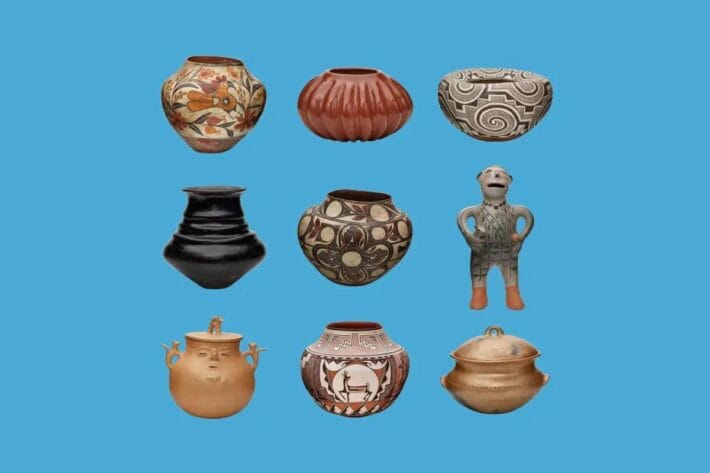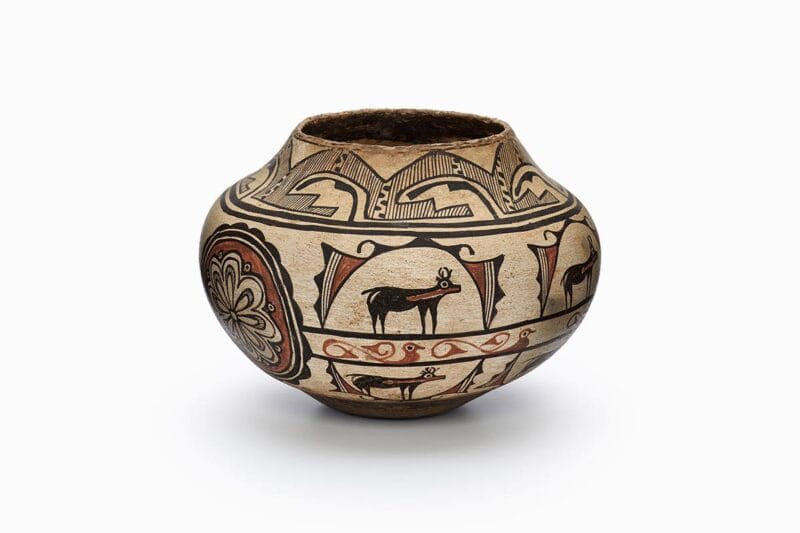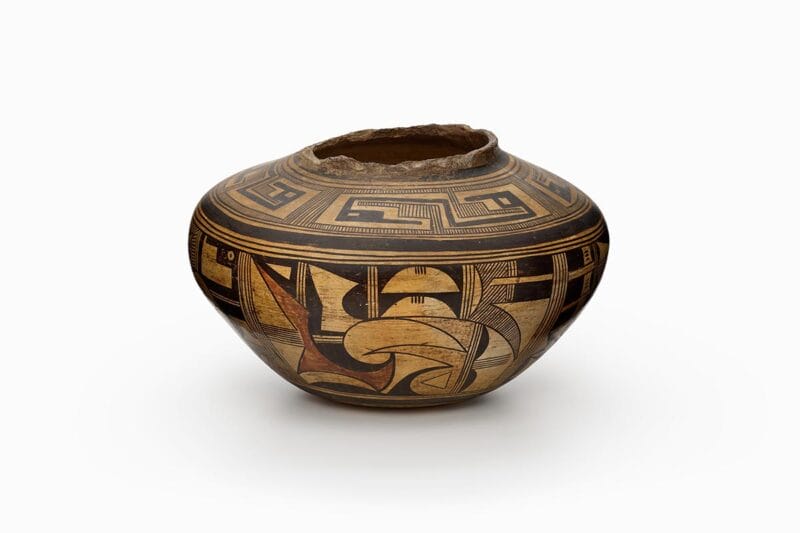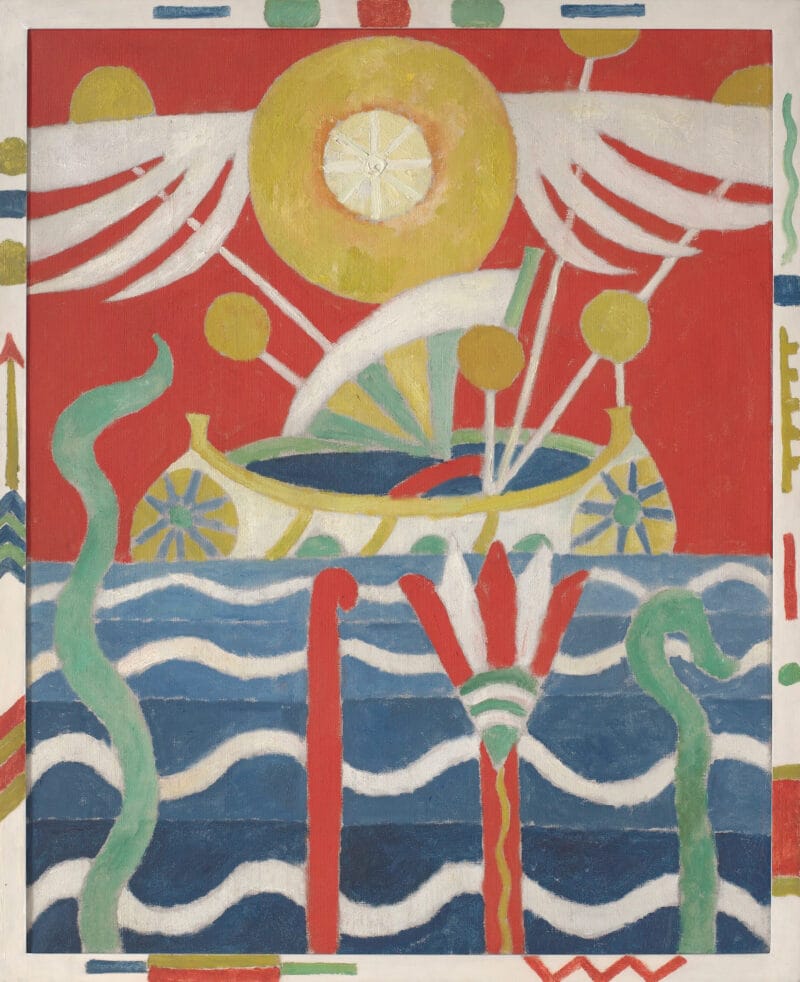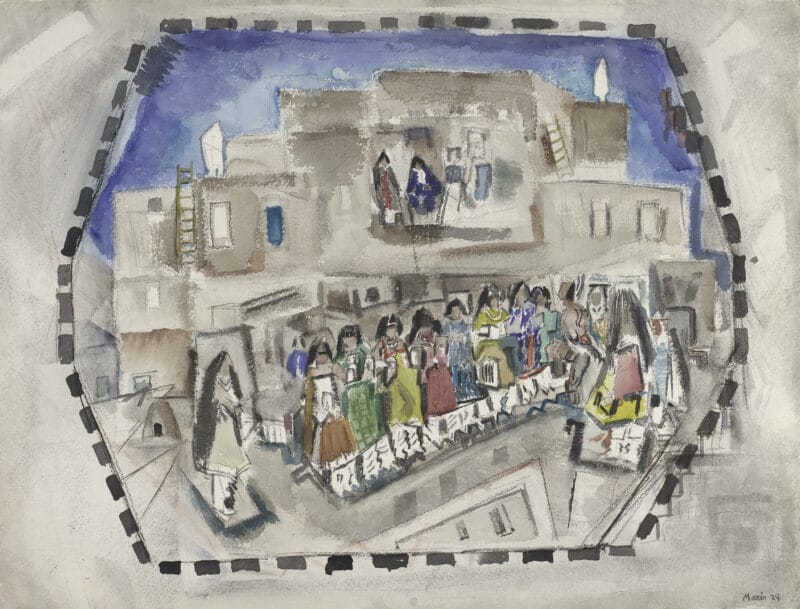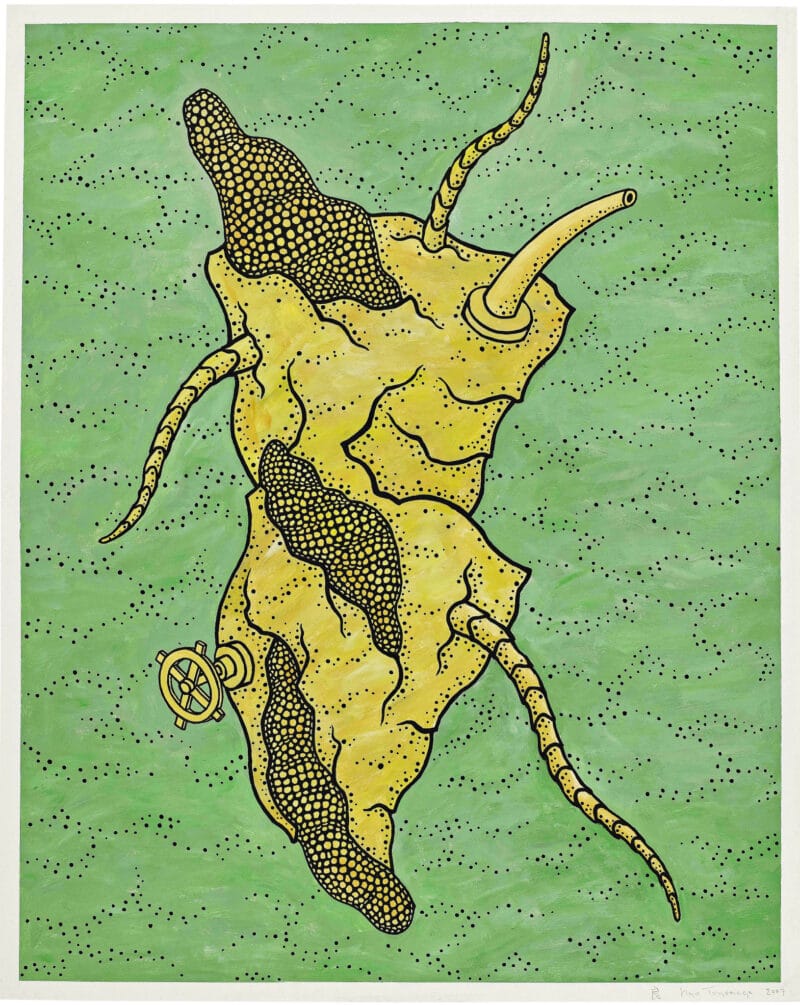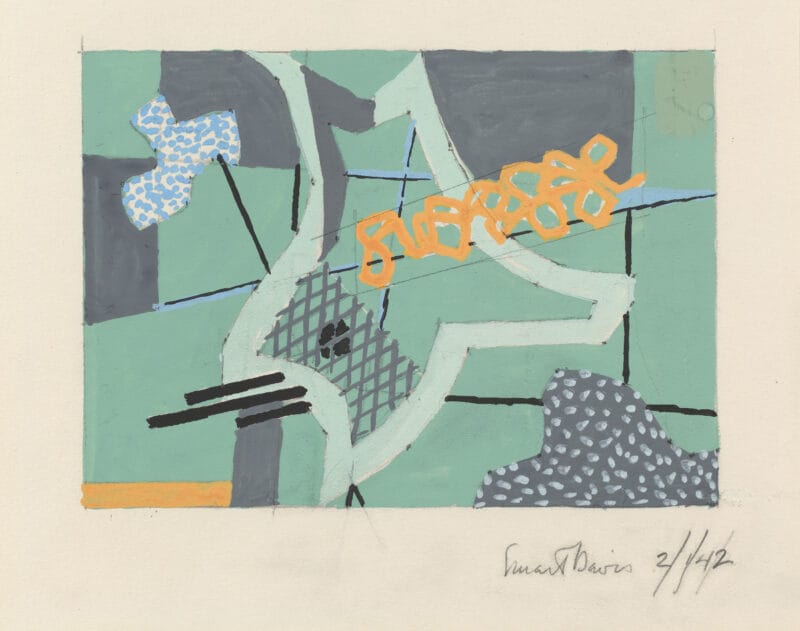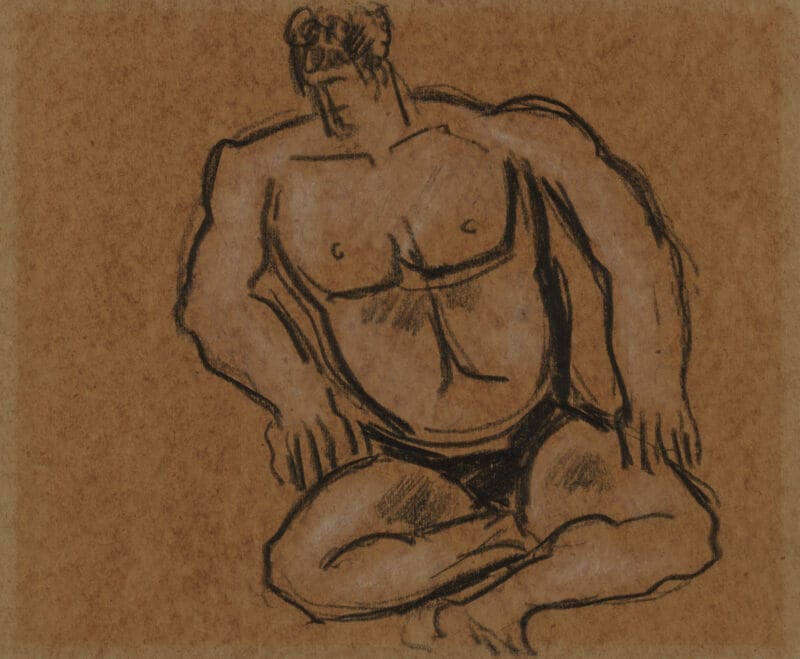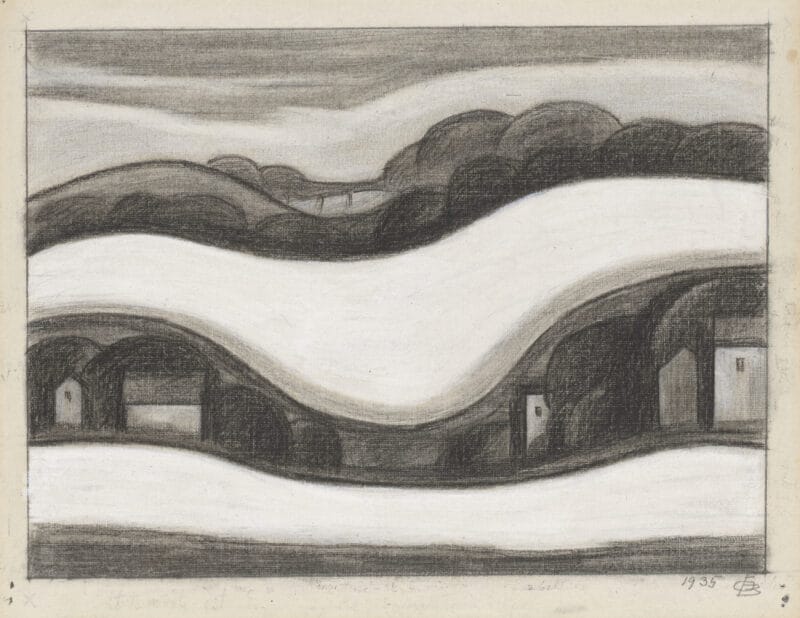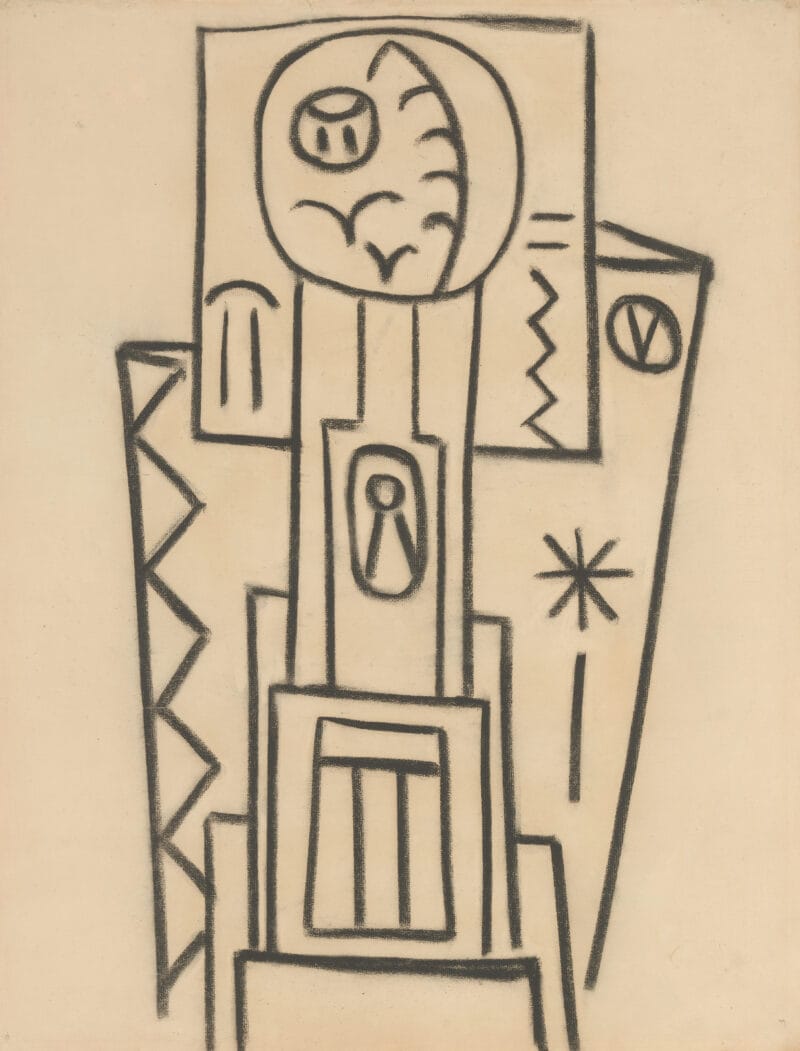
About the Object
Symbol V and Symbol IV feature elements of the natural world reduced to abstract signs that appear appropriated from Hopi and Zuni symbols and motifs. The verticality of the stacked forms in these charcoal drawings suggests the influence of Hopi dance wands. The drawings are filled with symbols of life and growth, from the sun to the branch-like symbols that represent corn.
Additional Information
Symbol V and Symbol IV are part of a group of six charcoal drawings that that connect Hartley’s Amerika works with his German officer series: Military Symbols 1; Military Symbols 2; and Military Symbols 3, all 1914, in the Metropolitan Museum of Art; and Berlin Symbols #6, 1914–15, in the National Gallery of Art.
The Artist;
Estate of the Artist, Inv. #285;
[Martha Jackson Gallery, New York, NY, consigned by above, c. 1956];
David Anderson Gallery, New York, NY, from above, 1961-1971;
Robert and Eleanor Millonzi, Buffalo, NY, purchased from above, 1971-1997;
Forum Gallery, New York, NY, purchased from above, 1997-2005;
Hirschl & Adler Galleries, Inc., New York, NY, purchased from above, 2005;
Jan T. and Marica Vilcek Collection, New York, NY, 2005-2023;
New York, NY. Martha Jackson Gallery. Marsden Hartley – The Berlin Period, 1913-1915: Abstract Oils and Drawings. January 3-31, 1955, cat. nos. 13-18.
New York, NY. David Anderson Gallery. Marsden Hartley: Paintings and Drawings. April 22–May 20, 1961.
Lewiston, ME. Bates College Museum of Art. Marsden Hartley: Adventurer in the Arts. September 20-November 19, 2021, pp. 9, 100, 102, ill. p. 105.
G. Alan Chidsey, Trustee for the Hartley Estate. Volume of Photographs of Paintings, Pastels, Drawings and Lithographs by Marsden Hartley Washington, D.C 1944–1960. Archives of American Art, G. Alan Chidsey Papers, Inv. 284, as Symbols.
Elizabeth McCausland Papers, Marsden Hartley Catalogue Raisonné: Drawings, [circa 1944-1964]. Box 13, Folder 44, Frames 3, 11, ill. Frame 11. Archives of American Art, Smithsonian Institution.
Elizabeth McCausland Papers, Other Research Files: Tabulation of Art Work, 1953. Box 19, Folder 7, Frame 6. Archives of American Art, Smithsonian Institution.
Levin, Gail. “Wassily Kandinsky and the American Avant-Garde, 1912-1950,” PhD dissertation, Rutgers University, 1976, pp. xi, 90, ill. fig. 31.
Levin, Gail. “American Art.” In “Primitivism” in 20th Century Art: Affinity of the Tribal and the Modern 2, edited by William Rubin, pp. 453–475. New York: The Museum of Modern Art, 1984. Exhibition catalogue, p. 461, as Primitive Art No. 2.
Agee, William C. and Lewis Kachur. Masterpieces of American Modernism: From the Vilcek Collection. London: Merrell, 2013, pp. 13, 56, 58-59, 241, 266, ill. p. 59.
Related Objects
You may also be interested in
Pueblo Pottery: Stories in Clay
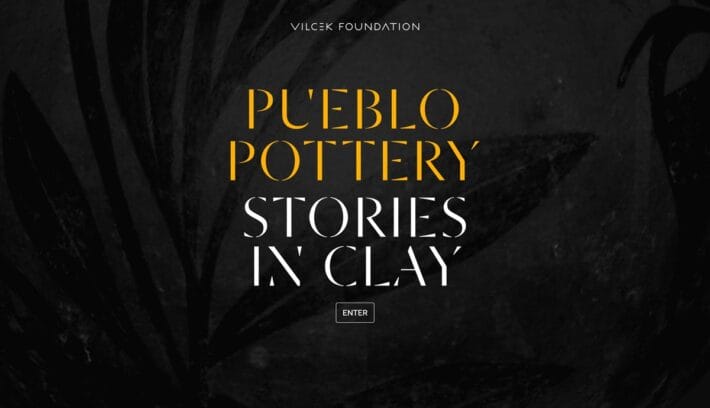
Grounded in Clay: The Spirit of Pueblo Pottery opens in New York
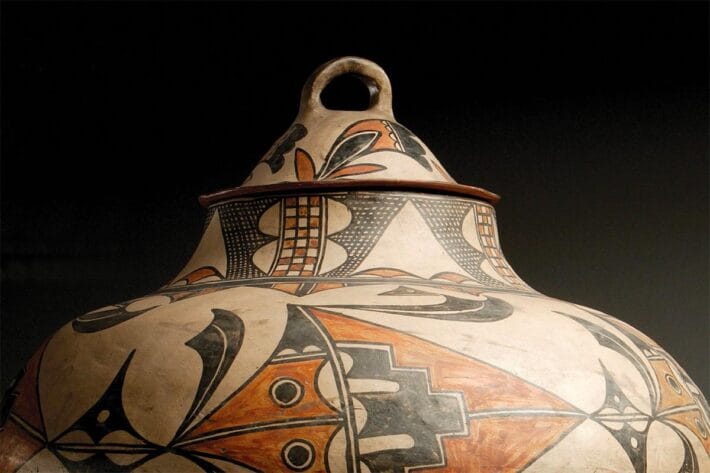
The Met to present exhibition of ‘Grounded in Clay’
